12 Common Workplace Challenges and Solutions to Overcome Them
Table of contents
- Challenge 1: Lack of communication
- Challenge 2: Unappreciated employees
- Challenge 3: Dealing with changes in leadership
- Challenge 4: Poor work-life balance
- Challenge 5: Unhealthy team dynamics
- Challenge 6: Technological problems
- Challenge 7: Lack of career advancement opportunities
- Challenge 8: Low engagement and lack of motivation
- Challenge 9: Poor project management and organization of the workforce
- Challenge 10: Toxic employee behavior
- Challenge 11: New employees
- Challenge 12: Lack of transparency and trust issues
- Conclusion
The past few years have transformed our understanding of work and introduced new complexities for business leaders.
Read on to learn 12 common workplace challenges HR managers and employers face and tangible solutions to solve them.
With the insights from a comprehensive Workhuman® iQ survey, which polled 2,268 full-time workers from the U.S., U.K., Canada, and Ireland, we’ve pinpointed some of the most pressing workplace challenges today.
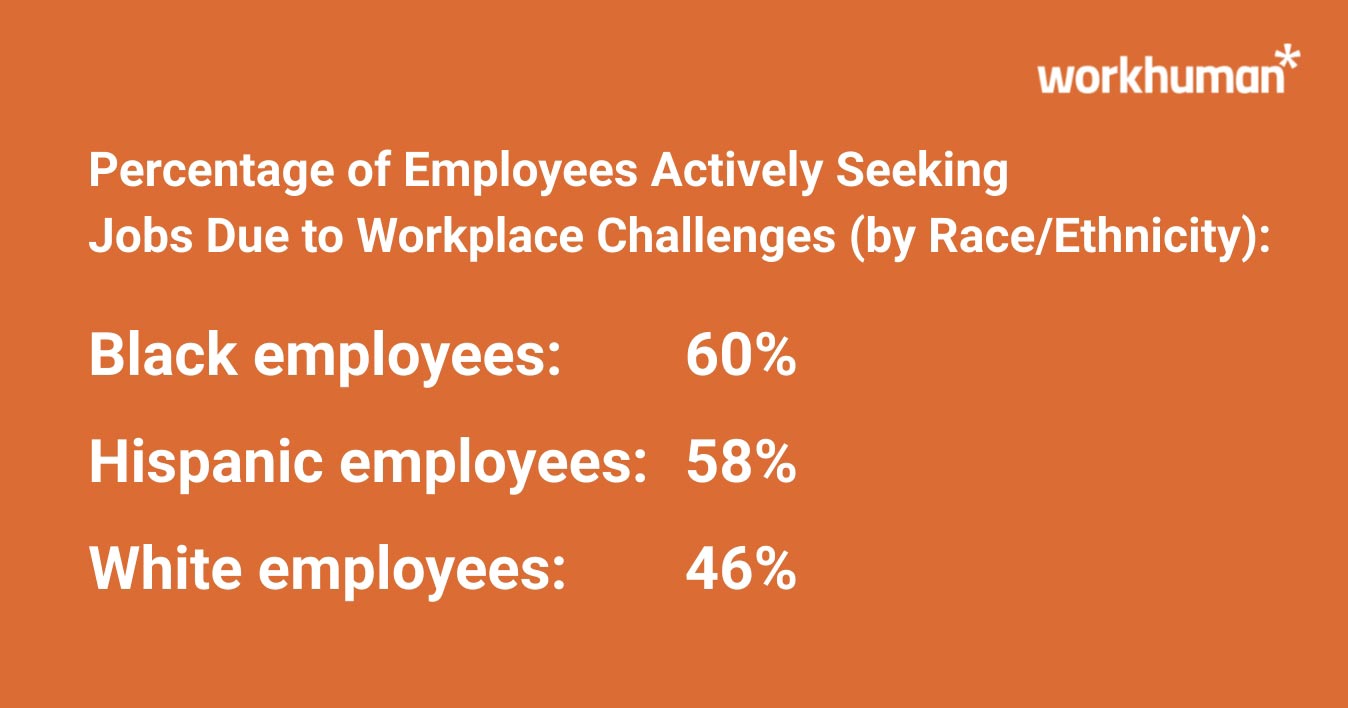
Challenge 1: Lack of communication
Poor communication within the workplace can lead to issues among employees and teams. When there's a disconnect between what managers expect and what employees understand, it often results in underperformance and a lack of focus.
Effective communication is a cornerstone of workplace culture and a standard operational process. Employees must be clear on how and when to communicate, no matter how routine or urgent the issue or task is.
Addressing this challenge is crucial for avoiding misunderstandings and maintaining a smooth and efficient work environment.
Solution: Consistent and transparent communication in the workplace
Communication is the heart of a strong organization. It's important to remember that effective communication doesn't always require a team meeting. Embrace methods such as phone calls, emails, check-ins, instant messaging, and team gatherings. The goal is to cultivate an environment of trust and openness.
For example, Slack messaging is ideal for quick queries but unsuitable for solving complex process issues that likely would require structured meeting time.
Similarly, a 30-minute scrum each morning can effectively track work progress, tackle common employee challenges, and set daily team agendas. However, a scrum meeting is not the right setting for discussing team-wide changes.
Remember to set a strong example. Employees often reflect the behavior of their leaders, so it's crucial to demonstrate transparency in communication and clear, effective messaging across the entire organization.
Challenge 2: Unappreciated employees
Low or no employee recognition is a common workplace problem that affects the workplace. Workhuman research has found that a common issue in the workplace is the need for more appreciation and respect.
We found that 25% of respondents said that's the one thing they would change in their current company culture.
Download our exclusive report to learn how strategic employee recognition can benefit your organization. Here's what you'll discover in this must-read report:
1. The impact of recognition on business outcomes, including increased productivity, safer workplaces, and decreased absenteeism.
2. Strategies for implementing a recognition program that is fulfilling, authentic, equitable, embedded in company culture, and personalized to the individual.
3. Save your organization more than $90 million in gained employee productivity. Invest in your employees and your business success by embracing strategic recognition.
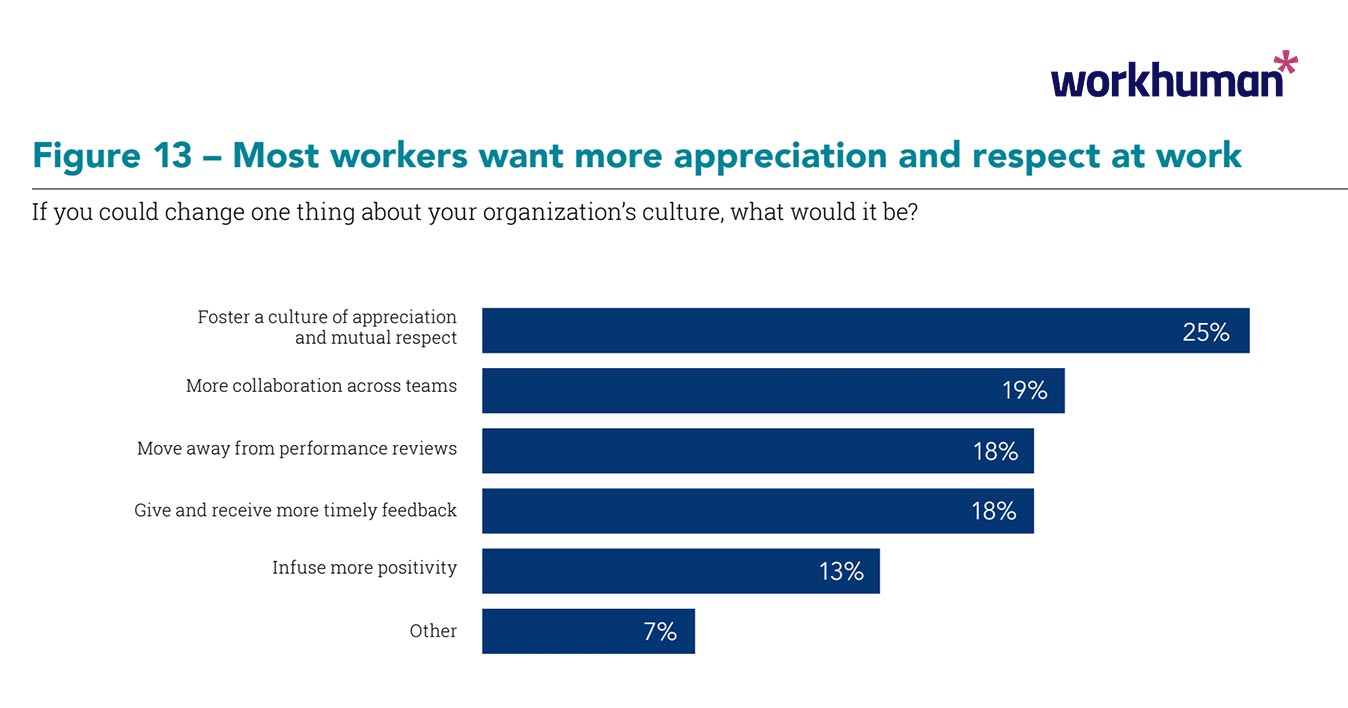
Our studies also show that this problem in the workplace can lead to poor employee health and wellbeing, resulting in reduced performance and overall productivity.
Employees who do not feel valued are 2.5 times more likely to suffer from burnout and stress, negatively impacting their well-being and job satisfaction.
A lack of recognition can also lead to feelings of disconnection and disengagement among employees, resulting in increased turnover.
When an employer fails to acknowledge a worker's contributions, an employee may feel undervalued. Feeling overlooked can lead to a decrease in productivity and quality of work.
Overall, the effects of insufficient employee appreciation can harm workers and employers.
Solution: Develop a company culture of employee recognition
HR teams should implement employee recognition and inclusion initiatives, such as "Employee of the Month" or leadership awards, to acknowledge employees at various levels.
Simple gestures like small gifts on birthdays or handwritten notes of appreciation from managers can show employees they are valued and cared for. These efforts can significantly impact different types of well-being.
Recognition benefits not only employees but also the organization. Research by Workhuman® and Gallup® indicates that an average organization with 10,000 employees could enhance productivity, potentially saving over $91 million, by doubling the number of employees who strongly agree that they received recognition for good work in the past week.
Find out how strategic recognition can save your organization more than $90 million in gained employee productivity. Download the Gallup-Workhuman report to see 3 ways recognition improves business outcomes.
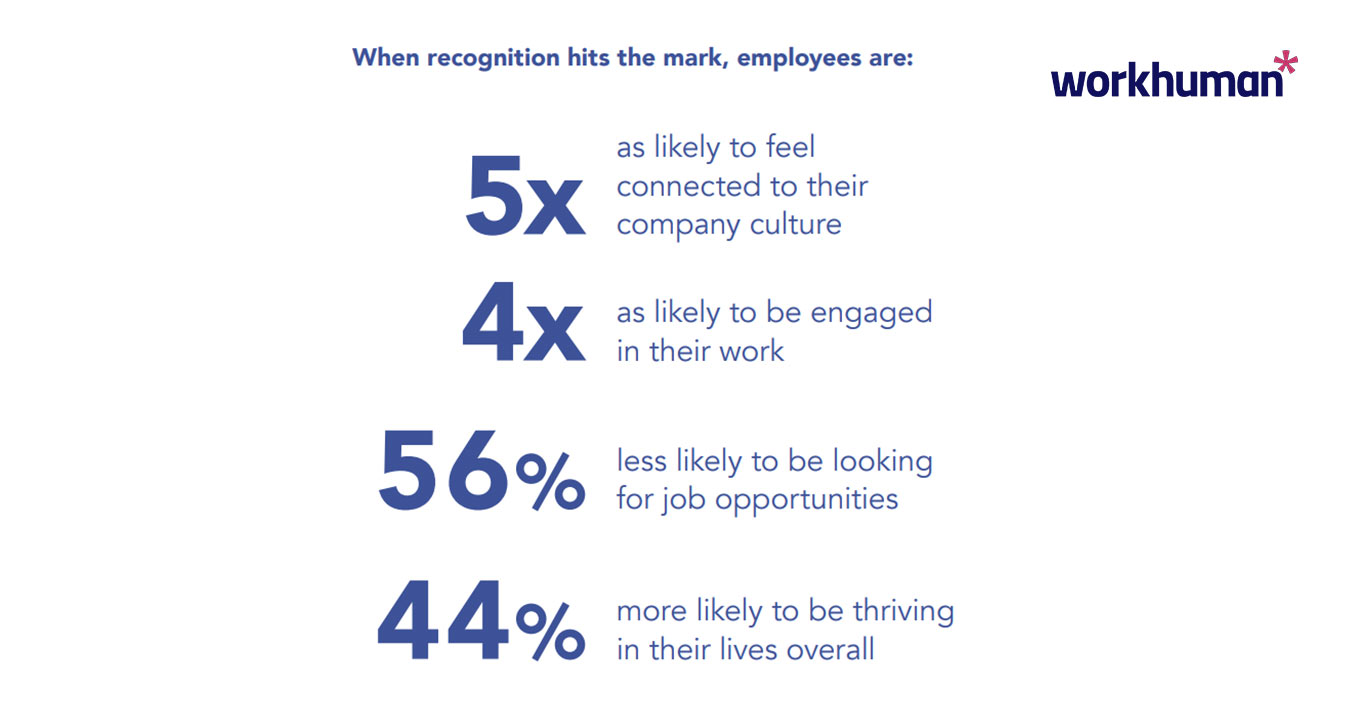
Challenge 3: Dealing with changes in leadership
Leadership changes can introduce new challenges for teams that call for adjustments to how the group communicates, works, and gets along. Shifts in leadership priorities, from employee recognition to work hours or technology use, can disrupt team dynamics.
These shifts may reduce productivity and satisfaction. Employees and leaders must collaborate closely to navigate these changes effectively.
Solution: Transition one step at a time
Executive uncertainty is a significant workplace issue that impacts the entire organization. New leaders should actively seek feedback from team members, implement robust leadership transition plans, and be transparent about them.
An open and honest communication strategy enhances morale, promotes inclusion, and motivates employees to embrace best practices under the new guidance. To smooth the transition, tackle challenges mindfully and track progress through metrics and employee feedback.
Challenge 4: Poor work-life balance
In 2024, inflexibility ranks as a top workplace problem. The option to work from home part-time has shifted from a perk to a necessity for many employees. If workers feel pressured to adhere to rigid work styles, resentment and frustration can build.
Similarly, feeling overworked often leads to burnout, which is a recipe for reduced productivity and engagement. A lack of flexibility can significantly hinder an organization's performance.
Solution: Flexibility
Adopting a hybrid and remote work model has become crucial post-pandemic, not just for retention but also for recruitment. Today's workers expect flexibility. Regularly collect feedback to see what's working and what isn't with this setup.
Addressing this issue and building trust and engagement with new work arrangements requires time. Patience is crucial during the rollout and adjustment periods.
Challenge 5: Unhealthy team dynamics
Competition and office politics are common workplace problems that can lead to conflict. While some levels of disagreement and diverse perspectives are essential for innovation, excessive conflict can harm trust, enthusiasm, efficiency, and morale. When these issues in the workplace escalate, they pose significant challenges at work.
In extreme cases, top employees might exit for jobs with better work cultures. This situation can undermine productivity and financial outcomes.
Other team and coworker challenges include:
- Laziness: Laziness often stems from unresolved issues or a lack of motivation. Managers and HR must address these to restore engagement.
- Conflicts: Immediate action is necessary to prevent conflict from escalating and affecting team performance.
- Gossip: Discussions that harm privacy or don't yield positive results can damage the integrity of your work culture.
- Complaining: While constructive criticism is valuable, persistent negativity can deteriorate team dynamics.
- A lack of trust among colleagues: Trust is essential in work relationships and should be a priority to maintain a healthy work environment.
Organizations may require a continuous and proactive practice of building a fulfilling and healthy workplace culture for employees. How would you do that? Read this paper, "Integrate Culture and Wellbeing in the Workplace"
Solution: Improve employee dynamics
Set employee behavior expectations from day one of onboarding. Ensure that employees understand what proper conduct looks like in your organization and the importance of upholding it consistently.
When resolving issues, supervisors or managers must remain unbiased and address problems early to prevent escalation. Patiently understanding various perspectives can lead to fair solutions that support everyone involved.
In cases of unfair politics or inappropriate behavior, managers should act firmly. A warning may be necessary to resolve these workplace issues.
Challenge 6: Technological problems
In today's dynamic world, a business's success hinges on its technological capabilities. Working without the necessary software can be frustrating and dull, quickly demotivating employees. Your business outcomes will suffer without the appropriate technology needed to collaborate, get work done, and innovate.
Solution: Implement the right technologies
Gather employee feedback so your organization can understand technological challenges and develop a plan that addresses current and future needs.
Prioritize essential systems. For instance, a CRM is vital for sales teams, while a contract management system may be less urgent, depending on your business size.
Implementing a marketing and social media management system can also offer valuable insights, save money, and target the right audience effectively.
Challenge 7: Lack of career advancement opportunities
To boost employee satisfaction, offer fair, accessible career advancement opportunities within the company. Employees have aspirations and expect progress. They seek new challenges and responsibilities to continue growing, even if they enjoy their current roles.
Additionally, a Gallup survey found that 49% of America’s working population is actively job searching or watching for new employment opportunities, which could reflect dissatisfaction with current work conditions or a lack of growth opportunities.
Growth is a significant motivator, and its absence can result in disengagement. Some problems with career advancement are:
- Being passed over for promotion: Consistently being overlooked for a promotion can feel demoralizing and lead to turnover.
- Unfair advancement practices: The glass ceiling persists, particularly affecting women and historically marginalized groups, leading to underperformance when employees feel stuck without growth opportunities.
- Pigeonholing: Assigning employees to roles without considering their interests or capabilities can restrict their growth opportunities and lead to dissatisfaction.
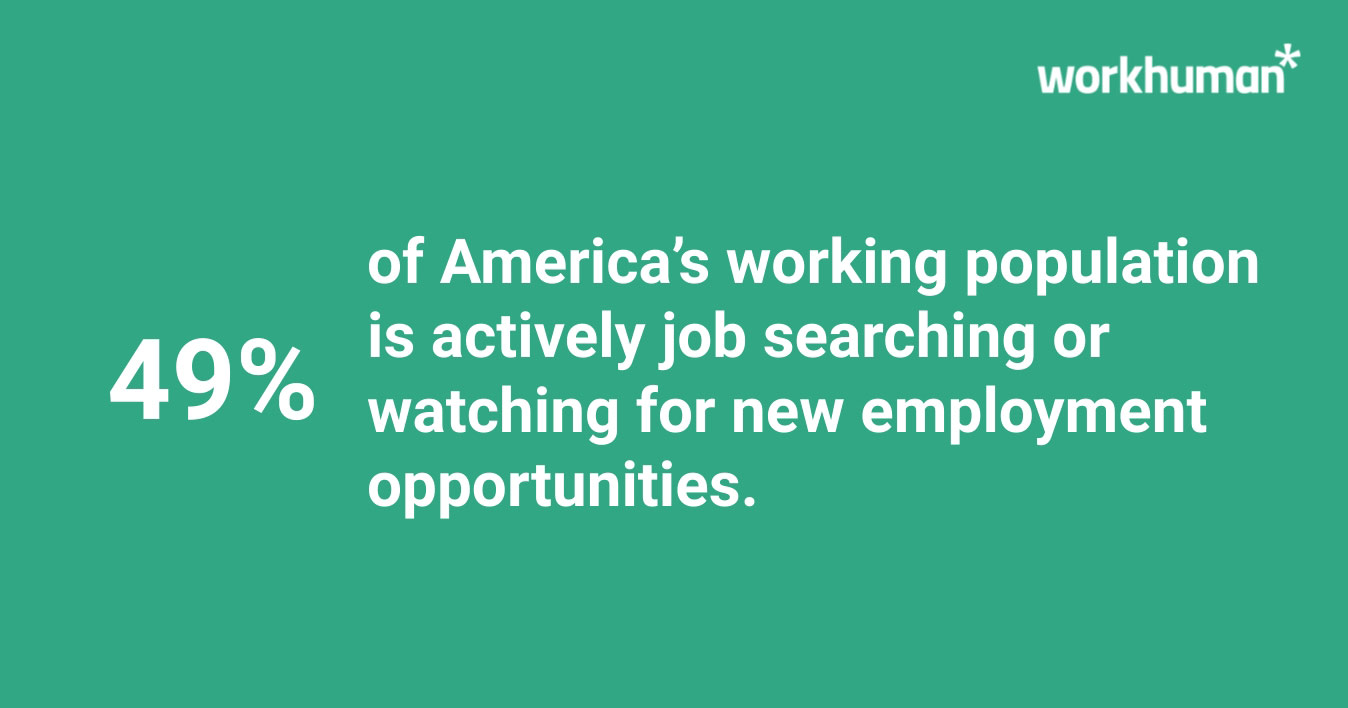
Solution: Professional development opportunities
To effectively promote your employees, you must understand them. Assess their skills and learn about their interests, especially when acquiring new abilities or competencies. Upskilling and career advancement opportunities support individual career growth and benefit the company overall.
Ensure your team knows how to qualify for and access growth opportunities. Discuss career trajectories with each member and clearly explain the criteria for reaching milestones.
Transparency about promotions motivates employees to pursue their goals. Additionally, it's crucial to honor commitments related to salary raises or promotions for high-performing employees.
Challenge 8: Low engagement and lack of motivation
Although many managers and HR teams strive to boost motivation and engagement, few address the underlying causes of their deficits. It's crucial to recognize that motivation naturally fluctuates.
Yet, consistent patterns of low engagement and poor morale need prompt intervention to improve the situation.
Solution: Use different triggers to motivate different employees
Pay is one of the most significant components of an employee's quality of life. But employers can tap into other factors that play a critical role in boosting motivation:
- Enhanced teamwork
- Innovative environment
- Greater recognition
- Time off
- Bonuses
- New goals
To understand what drives your employees, ask them. Initiate open conversations and run surveys to collect their insights. Use this valuable feedback to craft an incentive program, plan how to motivate your employees, and address the varied interests of your team.
Challenge 9: Poor project management and organization of the workforce
Inadequate project management can lead to significant delays, frustration, unwarranted blame, and subpar outcomes. Leadership, the technical transformation team, and managers are responsible for enhancing project management.
It's crucial to pinpoint the root of the problem – be it insufficient systems, inexperienced project managers, or poor communication.
Solution: Improve project management processes and systems
Effective project management hinges on clear role definition and delegation. Every team member should understand their responsibilities, know whom to report to, and how to communicate effectively. Additionally, project managers must excel in communication and organizational skills to ensure smooth operations.
Break the projects into weekly and daily tasks with clear allocations, timelines, and tracking mechanisms. For medium or large businesses, using Excel sheets for this is inefficient. You need robust project management systems that give you a bird' s-eye view of the progress.
Doing this helps you deal with problems before they become challenges that spill over to the client's side.
Challenge 10: Toxic employee behavior
Consistent mistreatment of an employee by coworkers or managers is unacceptable and harmful. It undermines the overall environment and significantly lowers the morale of the affected individual. Mistreatment or harassment can manifest in various forms:
- Discrimination based on a person's race, religion, gender, sexual orientation
- Setting unreasonable demands
- Isolating someone from better work or growth opportunities
- Blaming and shaming without factual justification
- Gossiping
Solution: Have a zero-tolerance policy
HR should work together with managers to investigate complaints thoroughly and, if necessary, issue a stern warning or proceed to immediate termination of the offender.
Ensure that those making a complaint feel safe enough to do so and don't receive any mistreatment for blowing the whistle.
Challenge 11: New employees
New employees can pose distinct challenges for any business, underscoring the importance of a standardized onboarding process.
Without a defined onboarding process, employees may encounter these workplace challenges:
- Insufficient employee training and development: Lack of proper training can result in costly delays, frequent mistakes, low motivation, and poor team dynamics.
- Feeling included: Humans are social beings, and without comprehensive onboarding, new employees might struggle to integrate, lacking the necessary knowledge and skills to understand the broader cultural context.
- Fear of making mistakes: New employees often fear making errors, which leads to anxiety about being judged or mocked, potentially impacting their performance and confidence.
Solution: Have a robust employee onboarding process
Employee training is a valuable investment. It should be an integral part of your culture, enhancing efficiency and productivity. Beyond technical skills, emphasize behavioral training to help manage conflicts effectively.
Employees should feel fully prepared to engage with both your company culture and their specific job duties.
Use this new hire checklist template to ensure that new employees feel fully prepared to engage with both your company culture and their specific job duties.
Proper training equips employees to overcome common challenges such as fitting in, fear of making mistakes and managing time effectively.
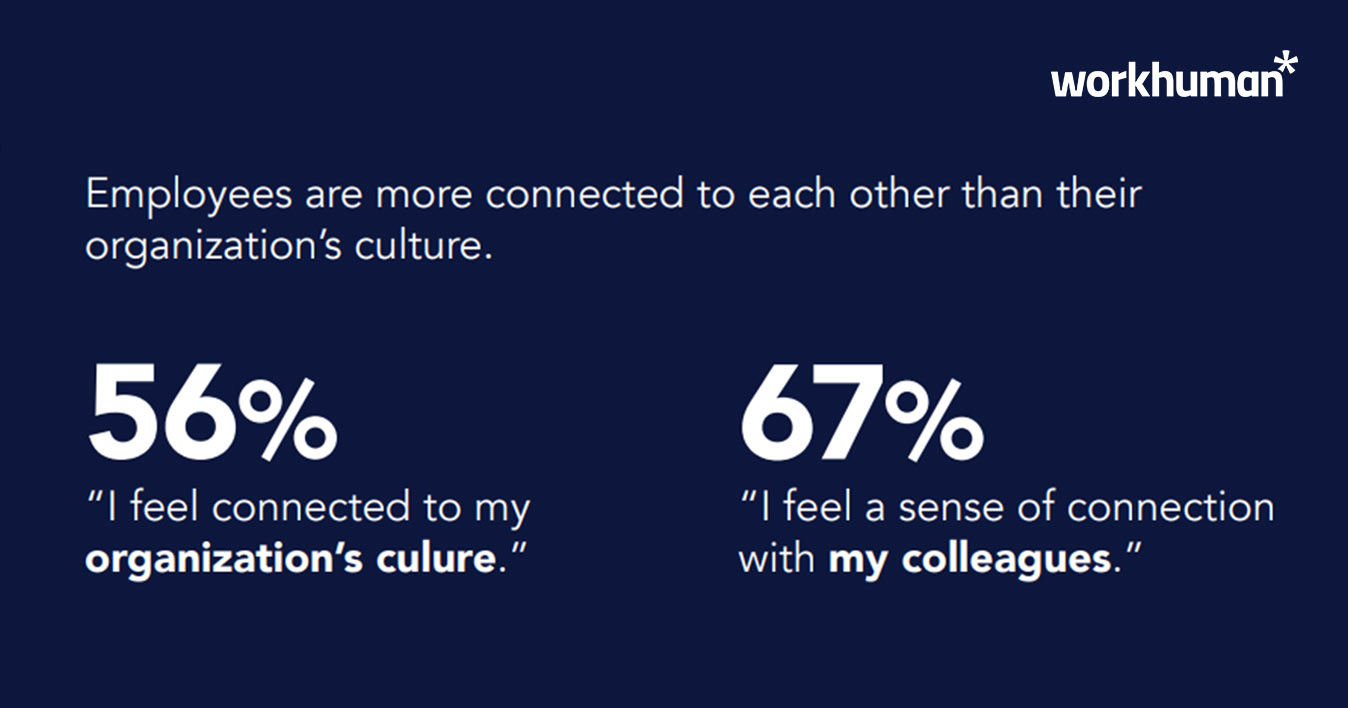
Challenge 12: Lack of transparency and trust issues
When employees perceive secrecy or lack of clarity, their trust in leadership and the organization diminishes. The importance of transparency in the workplace cannot be overstated, as it ensures employees understand how and why decisions are made, fostering trust and loyalty.
On the other hand, implementing significant changes without clear explanations can create confusion and frustration among team members, potentially leading to disengagement.
Solution: Make the workplace more human
Lead with transparency. Regularly facilitate open discussions during meetings to review what is and isn't working and to communicate important updates or changes.
Clear communication in the workplace ensures employees feel valued and respected when included in decision-making processes, so make it a point to involve them as much as possible.
Workplaces are organisms that evolve and thrive as much as their employees can. Read and implement these 6 Steps to Cultivate a People-First Culture.
Ensure fairness and objectivity in all workplace aspects, from company meetings to promotions. This approach fosters a psychologically safe environment where employees feel respected and empowered to share their opinions and ideas.
Download our exclusive report on how to build psychological safety.
Conclusion
Businesses today face numerous hurdles. Ensure employees feel appreciated, supported, and equipped to do their jobs to overcome these obstacles. Ensuring employees are involved and informed can transform these challenges into opportunities for growth.
Tackling these workplace problems with strategic improvements can lead to a more engaged and productive workforce.